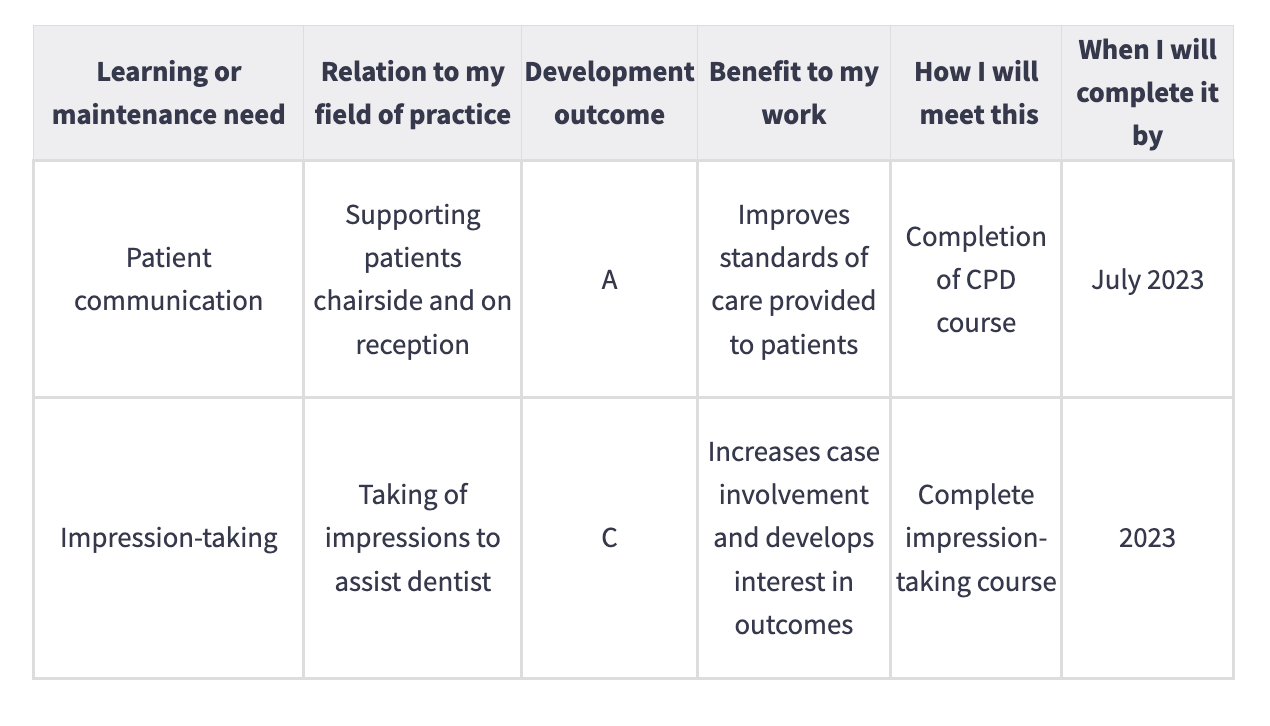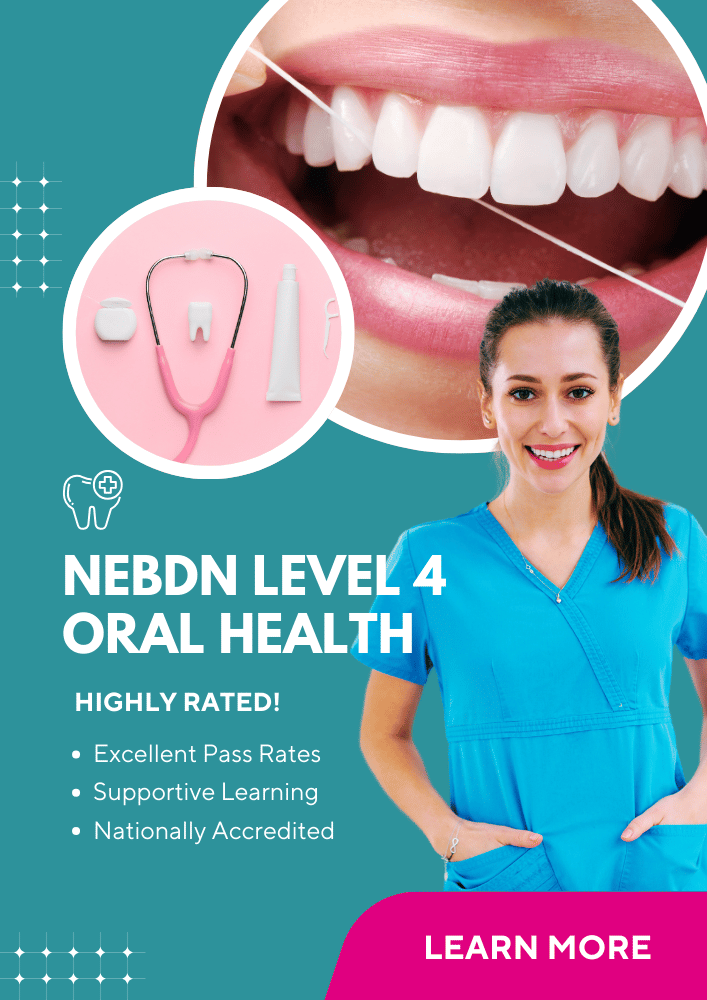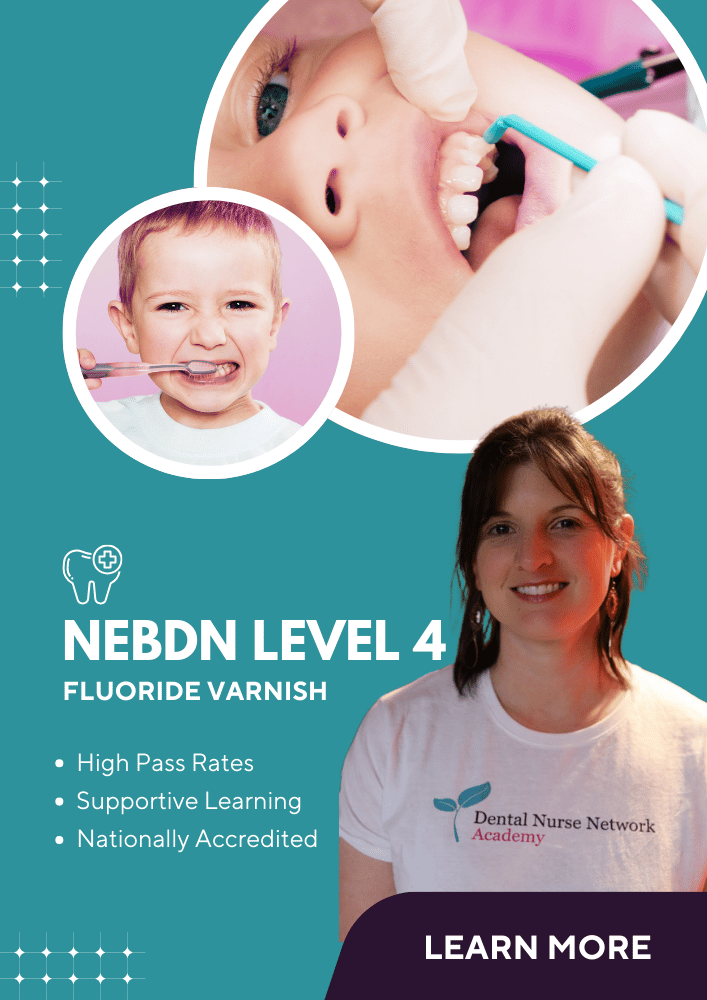 Personal development plans have always been a useful and highly beneficial tool for all kinds of professionals – but creating them has also been viewed as a daunting and difficult task to carry out. Unfortunately, many nurses struggle with creating (and following) a personal development plan (or PDP) and may put off using one. However, it doesn’t have to be this way. PDPs were not created to make our workload heavier or our day harder – if anything, they were created to make it all that much easier.
Personal development plans have always been a useful and highly beneficial tool for all kinds of professionals – but creating them has also been viewed as a daunting and difficult task to carry out. Unfortunately, many nurses struggle with creating (and following) a personal development plan (or PDP) and may put off using one. However, it doesn’t have to be this way. PDPs were not created to make our workload heavier or our day harder – if anything, they were created to make it all that much easier.
Correct implementation of a PDP can help you to realise your goals and dreams and achieve them with a clear, easy-to-follow pathway. A good PDP plainly lays out each goal you have in mind and the steps you need to take to get there – such as enrolling on a course to upskill and gain further qualifications, or undertaking CPD training to enhance your existing skills. The PDP focuses on these aims, shows how they can help your role and improve your work, and even helps you set deadlines to complete them by – all while satisfying your GDC CPD requirements.
It can be hard to know where to start or what to include in your PDP, or even to envision your future in a way that enables you to see your goals clearly – but don’t let the unknowns distract you from what is one of the most beneficial tools we have. Creating a PDP doesn’t have to be a complicated task, and it is something that you can easily get used to doing, as long as you use a little honesty as you undertake it.
By being honest with yourself about what you want to be doing – whether it’s staying as you are or going for some form of career advancement – you can easily create a PDP that suits your needs, gives you direction, and helps you keep the pathway to your goals clear and concise in a way that makes them much more achievable.
What does a PDP include?
To put it simply, a PDP will include any goal you have in your career, the steps you will take to meet it, and the ways in which each step is related to the GDC Standards. This can make it seem like a daunting and difficult task and often puts people off – after all, what if you don’t know what you want to do, or you don’t know what courses you should undertake? Well, there is a solution to both of those issues – and it starts with honesty.
Planning your career

To begin with, you need to think honestly about your future; to consider where you want to be in the next few years and where your career will eventually take you. You don’t have to have a definitive answer, and you don’t need to know exactly what you want to achieve, but a rough idea will do well to set you up until you’ve figured those bigger things out – perhaps taking an extra course to develop your skills, maintaining your CPD, or exploring options for further training to help you climb the career ladder would be a useful first step? Be honest with yourself now, and you will thank yourself in the future.
Your career plan may involve a change in role, or taking courses to upskill, or even taking on further responsibilities at work. Whichever way you want to go, there are plenty of options available to you in the dental industry so that you never get bored. These include:
- Head nurse – This role is a good pathway for someone who has strong team leader skills and good standards of practice. You will be someone who can problem-solve, who can train and help others, and who can be the go-to for the rest of the nursing team. This role could also be a stepping stone on the way to being a practice manager.
- Practice management – This is perfect for those with good team leader skills and those who enjoy the more office-based work; those who are able to multitask and who can get stuck into policies, procedures, audits and monthly reports. This role often involves further training, either in-house or via a course, and if you would like to pursue this, you will need to consider tailoring your CPD towards team leading, complaints management and audit-taking – all of which can form a part of your PDP.
- Treatment coordinator – This is the right role for those who like to provide further patient support as patients navigate their proposed treatment plans; it involves helping patients to understand what their options are. You’ll need excellent communication skills and an understanding of treatment plans, all of which can be achieved through CPD courses.
- Upskilling – Perhaps you want to do fluoride application, or you’d like to take impressions or radiographs on the clinician’s behalf. Whatever your interest, as a dental nurse you can undertake further training which enhances your role without completely changing it.
- Trainer assessor – We all start with a training assessor who helps us to navigate our course and become a qualified dental care professional. If you like to help and guide others, then perhaps a career in training others is the way forward for you.
- Hygiene therapy or dental clinician – These are the biggest steps of all. Some nurses will use their knowledge and experience to step up into a fully clinical role and become a hygienist or dentist. This requires much more substantial training at a university level, but it is a possibility if it is where you realise your goal is.
Once you are honest with yourself about what you want to get out of your career as a dental nurse – even if you only have a short-term view for now – then you will start to see the true benefit of using a PDP and how it can help you to understand and plan your career. Even if you have no interest in exploring other roles within the industry and wish to stay in nursing, you can (and should) still use your PDP to focus on the details of the CPD you will undertake – and you can make this even easier through the process of self-reflection.
PDP and self-reflection
Once you have in mind what you want to get out of your career, you can use the same sense of honesty in a little self-reflection. This is perhaps the hardest thing of all, because as well as acknowledging the things you are good at, you have to be open with yourself about the things you are not so good at. This helps you to understand where you need to focus your CPD courses so that you can improve your knowledge and standard of work in areas you are struggling with, and it will make completing your PDP so much easier because you’ll know what areas to improve and the actions to take to get there. Remember: no one knows everything, so don’t be embarrassed or ashamed if you find there are things you need to work on – if anything, it is expected.
You might consider:
Strengths – What are you good at? Can these skills be utilised in some way? It may be that you excel in patient rapport and building those strong relationships, in which case you could be an excellent treatment coordinator. Or perhaps you have an innate understanding of radiography and find the uses of it interesting; in which case, why not upskill with a radiography course?
Weaknesses – Look back at your recent work and identify the areas where you struggled most. Did the infection control procedures trip you up? Did you struggle to understand the need for data protection policies? Whichever area it is, you can include it on your PDP as one that indicates a need for you to undertake further training, which can often be found online from multiple providers.
Self-reflection is all about looking at yourself, your work, your performance, and your skillset; about honestly identifying the areas in which you could do better, and also noticing the areas in which you are doing well and the existing skills you could utilise further. Every CPD course you take must include a section of self-reflection at the end, and your PDP benefits from this too – as do you. You know yourself better than anyone, so who could be better-placed to see where things can be improved?
Creating your PDP
Now that you’ve investigated your career choices, figured out your weaknesses and identified your strengths, you are ready to create your PDP. Start by looking at your weaknesses (perhaps make a list to tick them off) and think of ways to improve in those areas – CPD courses, peer reviews or further training, for example – and link each to one of the GDC development outcomes. Explain how they relate to your field of work, and then end with the date by which you want to achieve each one.
An example of this would be:

The benefit of this is that not only can you now clearly see what your goal is, but you have also set a deadline for when you want to achieve it, thereby increasing your motivation to complete it. If you also go to the extra effort of putting each goal in date order, then you can easily tick them off from top to bottom without getting confused about what's next. This also shows you the benefit of undertaking the training and refresher courses, allowing you to remind yourself should you ever forget why you wanted to take the course to begin with.
GDC outcomes
“The four development outcomes set out by the General Dental Council (GDC) enable you to align your learning activity to the Standards for the Dental Team, the ethical principles of practice that registered dental professionals must adhere to.”
General Dental Council Website, 2023
The GDC outcomes are a set of four clearly defined topics which dental care professionals must meet across their CPD cycle. By ensuring we meet these outcomes, we are also ensuring optimum results – not just from our training, but also from our work performance.
As mentioned above, the aim of these outcomes is to help us to meet the standards set for the dental team – nurses and clinicians alike. They also give us a clear view of what we need to achieve to stay compliant, to keep up to date, and to better aid our colleagues and patients in the care we provide. They are therefore included on our PDP to show how we are meeting these requirements, and sometimes your activity will meet one or more of the outcomes. This is the section that confuses many PDP users, but they are actually much simpler to follow than you may realise.
The outcomes are split into the following four groups, as described on the GDC website:
Outcome A – Effective communication with patients, the dental team and others across dentistry, including when obtaining consent, dealing with complaints, and raising concerns when patients are at risk.
Outcome B – Effective management of self and effective management of others or effective work with others in the dental team, in the interests of patients; providing constructive leadership where appropriate.
Outcome C – Maintenance and development of knowledge and skill within your field of practice.
Outcome D – Maintenance of skills, behaviours and attitudes which maintain patient confidence in you and the dental profession and put patients’ interests first.
Examples of each can be found on the GDC website here.
By utilising these outcomes, we can make sure that our CPD and further training and development is tailored towards our needs. These points are not here to hinder us or our PDP, but rather to make sure that the courses we take and the plans we have are going to be beneficial to us and our role. They are designed to give us focus, and by combining the development outcomes with the plans we make on our PDP, we are ensuring that we are making the most out of our actions and focusing our aims on the things that will benefit us most.
Once you have completed your PDP, it is a good idea to take a small break and then look at it again with fresh eyes. This will help you to see if there is anything missing from the plan – a particular goal, a certain course, an aim you wanted to meet but forgot to include. It also helps you to reflect on the timeline that you have given yourself; is there enough time available for you to achieve your stated goals? Have you been realistic in how long each one may take? This process allows you to make sure that each development outcome is met and, should there be an outcome missing, you have time to research how to achieve it in a way that best suits your needs and aids your improvement.
Conclusion
Dental nurses have a lot more responsibilities these days than they did when the role was first created, and these include keeping your professional development up to date. While it can be overwhelming at times, being organised and planning ahead – even a tiny bit – can make a huge difference not just to your work, but to you on a personal level.
A PDP, as shown above, can be easy to set up if you approach it with honesty and a clear mind, and you’ll soon find over time that your plan becomes clearer and more tailored towards your specific goals. I know my first ever PDP was very generic, but it helped me to see year on year how to better focus on what I wanted to do, and how I could use my PDP to keep track of my career plan. A good PDP removes the stress over what to learn and when, and it takes away that extra mental load of trying to remember what you need to do – whether that is how to stay compliant, or the steps needed to follow your career pathway and make the most of your role.
Remember that no matter what you want from your career in the dental industry, a personal development plan will only ever help you, and being honest with yourself is only going to benefit you as you grow as a dental nurse.
Written by Natasha Garthwaite BSc, RDN



